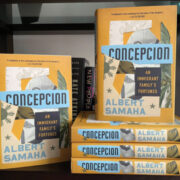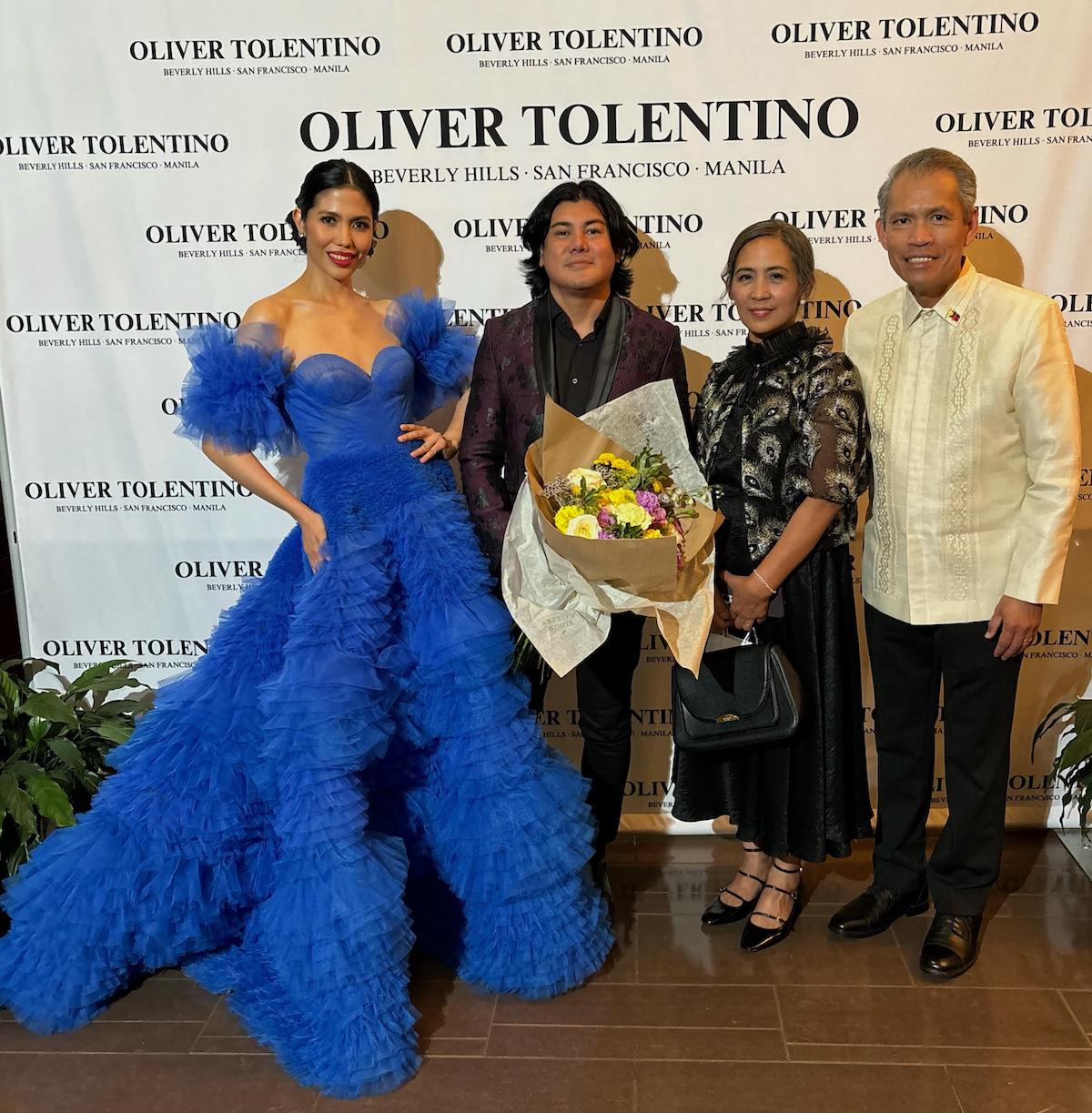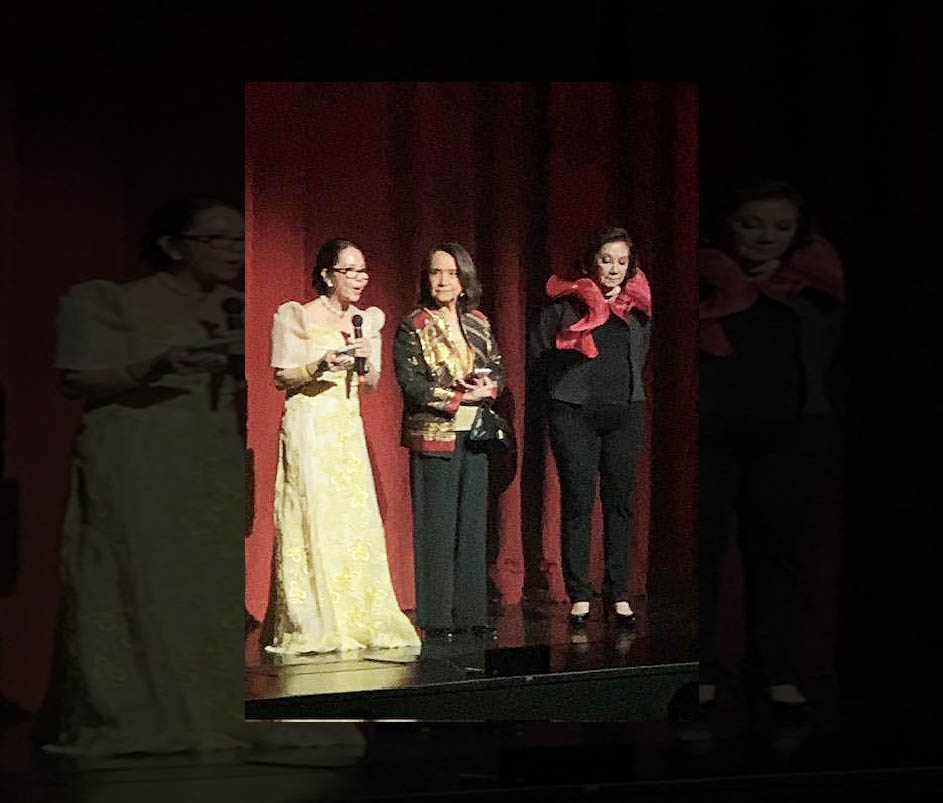
Author and BuzzFeed News inequality editor Albert Samaha’s second book Concepcion is his definitive love letter to his family, and the entire Filipino diaspora by extension.
The book tells the personal journey of Samaha’s family leaving a comfortable life in Manila to start fresh in the United States and the author cleverly weaves the migration narrative into the colonial history of the Philippines along with that of Filipinos in America.
“If I have any single dream for the book, it’s that I hope enough people read it and are moved by it that it contributes to rolling back the oppressive rules by which our world operates, shrinking the gap between colonists and colonized, served and servers,” Samaha told the Asian Journal.
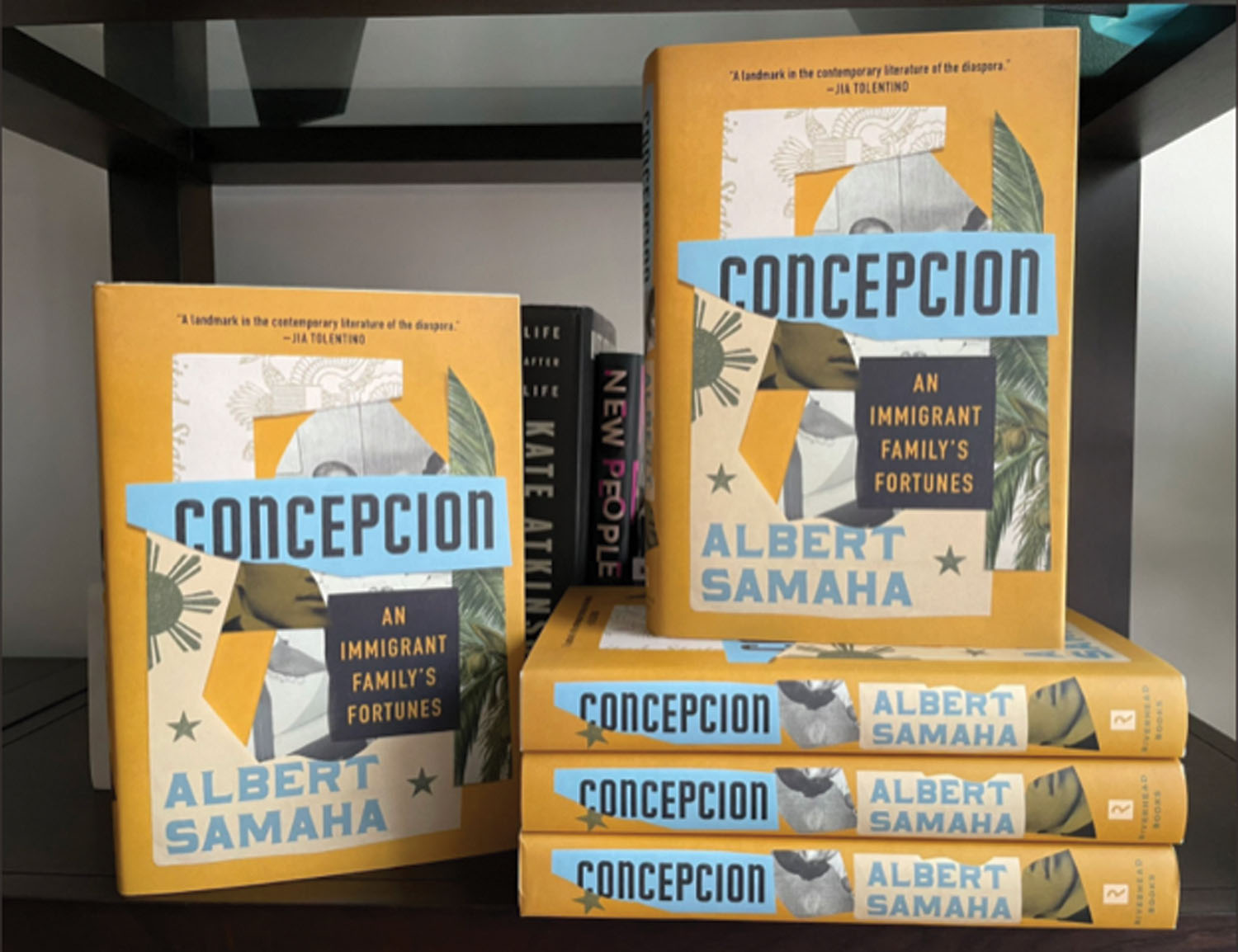
From a more practical perspective, he hopes the book helps people from immigrant diasporas better understand their place in the global age — and see themselves represented.
“I hope kids read it to frame the mythologies presented in their textbooks. I hope it helps Filipino Americans unaware of our history embrace our collective past and interrogate our impulse to assimilate. And, above all, I hope it inspires others to investigate their own family histories. As I note in the book, my family’s story is but one thread in a vast tapestry, and the more stories we record, the fuller our vision of the world,” he added.
Critics are raving, Publishers Weekly calls it “an extraordinary look at the freedoms and perils of making a new life in America” while Kirkus Reviews says it is “an expansive view of Filipino history and the experiences of Filipino immigrants… that provides an intimate perspective on the legacy of colonialism.”
Samaha seamlessly blending multiple story arcs involving Philippine history, Fil-Am history in America and his own family’s immigrant journey makes Concepcion an interesting, engaging, and compelling read.
How else would one explain getting the feels of an epic history lesson interspersed with an intimate family narrative, all in one chapter?
Concepcion is his mom’s family name, and it’s the name that links the main characters in the story: from his grandparents and uncles, aunties to his cousins.
The second-generation FilAm read more than 50 books, dozens of research papers, and hundreds of pages of primary source documents just to learn the ins and outs of the history he hoped to explore in the book.
His initial plan was to complete all the research before he started writing, only to realize within a few months that the breadth of information he was gathering “was far too massive to digest all at once — plus, I was restless to start putting words to the scenes and ideas bouncing around in my head.”
Thus, he ended up writing one page, one section at a time. Once he had all the elements he needed for one section, he would start to write and build up the chapter.
He admits he initially struggled with the structure, braiding together two timelines. The first began with his grandmother Caridad’s arrival in the U.S. in 1978, the other that stretched back to his ancestors on pre-colonial Mindanao and chronicled the path that led to their family’s exodus from the Philippines.

Trying a bunch of different arrangements and combinations, Samaha added the second-generation experience, the lens that he was looking into. He also opted for short chapters that quickly jumped back and forth in time, but that muddled the core ideas and felt like laying out a bunch of dots without enough lines connecting them.
Eventually, it became clear to him, with help from many conversations with his editor Becky Saletan, that one of the central messages in the book is that “history ripples into perpetuity, the events of the past forever shaping the basic tenets of our reality.”
“To show how past and present are linked, I decided to build longer chapters that paired a segment from each timeline under a shared theme — for instance, weaving the experiences of migrant Filipino workers in 1930s northern California with my cousin’s upbringing in 1990s Vallejo, California, to show how American definitions of race dictate opportunities,” he shared.
“This structure posed its own challenges: how did the puzzle pieces best fit together, with chronology in order and the themes aligned? I’d print out early drafts and cut out sections with scissors so I could move the parts around on my living room floor until I eventually came to the arrangement that you see in the book.”
Asked if there was a specific moment that inspired him to come up with the book, Samaha said that the inspiration accumulated over time.
Looking back, he thinks he first gained a vague inkling that he wanted to better understand his family history when he visited his granduncle Tomas in Italy in 2009 after former Philippine president Corazon Aquino died. He was in college and writing about his role in the People Power revolution for a Filipino community newspaper in California.
Even before that, however, he had been curious about his roots, that over the following years he began to ask his elders more questions about their respective migrations.
“Then one day in 2016, when I was back in the Bay Area visiting family and contemplating the struggles my elders faced, I was suddenly struck by the impulse to promote my curiosities into a specific project — to build the stories I was hearing into a single, cohesive narrative,” he said.
As a journalist, he had exclusively been telling the stories of others, but deep within him he knew he had a story to tell as well.
“The more I learned about my family’s history, the more I realized that it was so fascinating to me because I so rarely encountered books or shows or movies that presented experiences that reflected our own, even fewer exploring the second generation perspective I carried. That revelation convinced me that our story was worth sharing,” he added.
He then embarked on this project with a question he didn’t know the answer to: “Were my elders’ immigrant sacrifices worth the price they paid?”
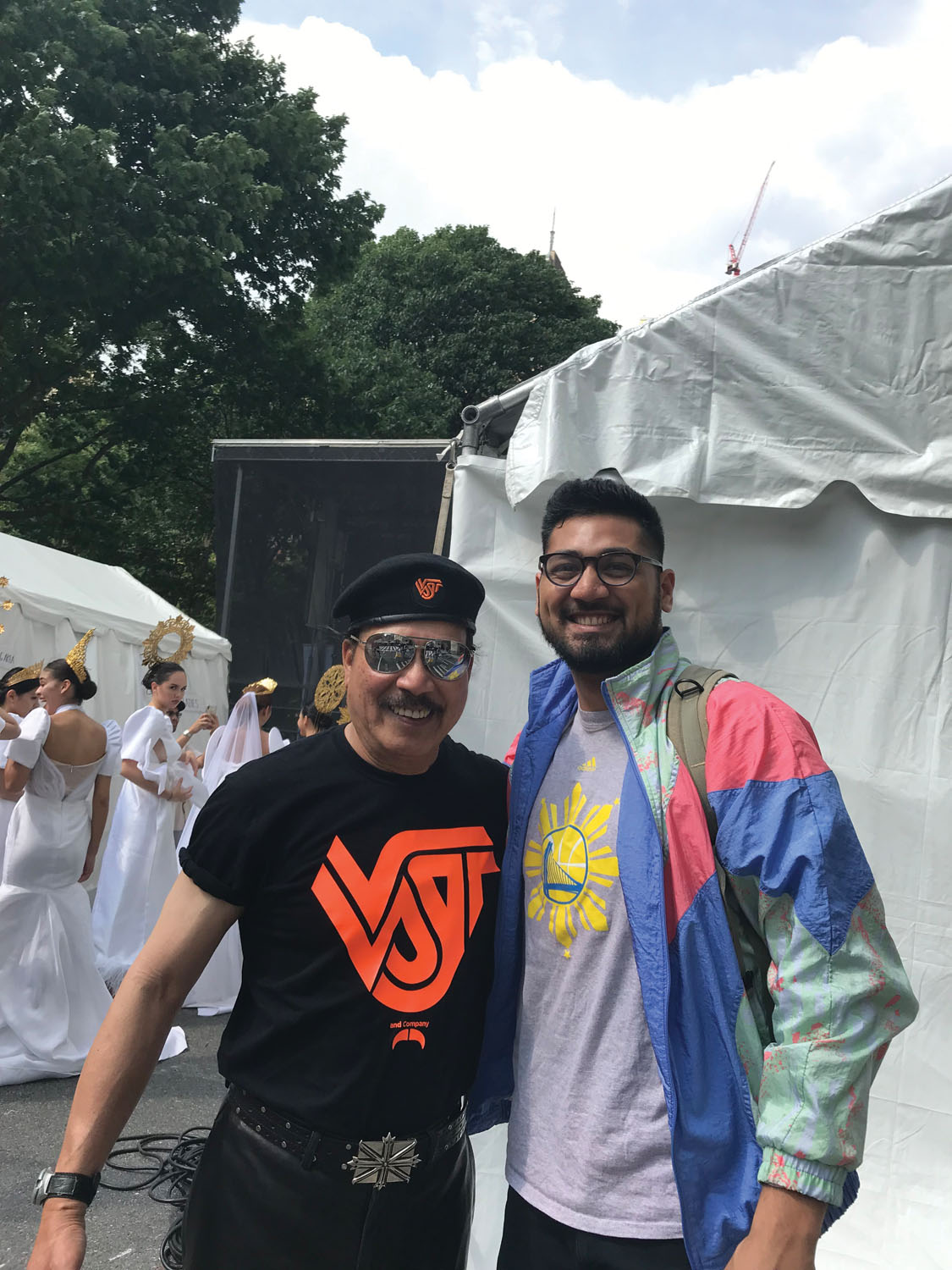
He was deeply fascinated by his Uncle Spanky Rigor’s career as a rockstar and one of the founding members of the pioneering ‘70s disco band VST & Company, and his choice to leave it all behind. Rigor worked as a baggage handler at San Francisco International Airport for almost 30 years, since he immigrated to the U.S. from the Philippines.
When Samaha last visited the Philippines in April 2017, he went with his mom, for an essay he wrote about President Rodrigo Duterte later. His mom grew up in Manila, though her parents are from northern Mindanao.
His dad is from Beirut and currently lives there. The couple met on an airplane. His mom was a flight attendant, his dad was a passenger.
“They separated when I was young. I lived with my mom in California, but saw my dad at least once a year, and much more often in recent years. I grew up around my mom’s side, so culturally I felt full Filipinx growing up,” he told Asian Journal in an earlier interview.
As a journalist, Samaha said he was accustomed to the struggle of finding critical sources and digging up enough puzzle pieces to stitch together a truthful story.
This project posed an opposite challenge.
“I had easy access to the relatives I was writing about and had no trouble compiling a vast trove of material, from interviews and recollections — but what to omit?” he asked.
Certainly not the fact that Albert’s mother is ultra-religious and a Trump supporter, or that she had to go through financial trouble years ago.
Samaha shared that some relatives were more forthcoming than others.
“My family, like a lot of Filipino families love to chismis, to talk and gossip about one another. I learned how to tell stories from my mom, from my family. We were always talking,” he said at a book reading in Brooklyn last week. “A lot of our friends, even some of our relatives don’t know some of the details revealed in the book.”
His initial reaction when he saw the book for the first time?
“Sheer joy, man. Just sheer joy. And relief. A big weight off the shoulders. And immense, personal pride.”
“This project took me five years and has been on my mind for much longer. To see my family’s name there on the front of a hardcover — it brought me to tears and all I could think about was how excited I was to show my mom and aunties and uncles and cousins,” he said.


